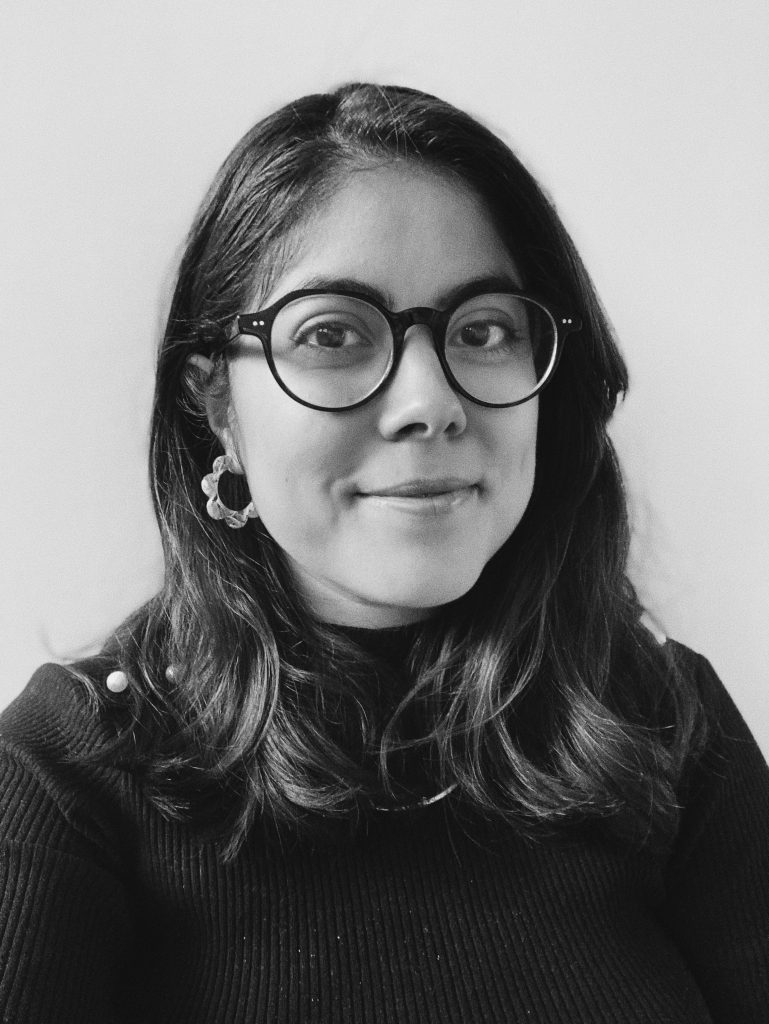MASSIVart was given the opportunity by the Embassy of Canada in Mexico to orchestrate the Indigenous Crossroads Canada – Oaxaca event – an ambitious cultural program in the fall commemorating National celebrations, taking place in the city of Oaxaca in Mexico from September 20 to October 8, 2021.
 Jimena Lopez, Creative Coordinator of MASSIVart Mexico, is a passionate art historian and has supported the curatorial committee of the Indigenous Crossroads Canada – Oaxaca event, composed of Irma Pineda (Zapotec), Gerry Lawson (Heiltsuk), Yasnaya Aguilar (Ayüuk), Niki Little (Anishininew) and facilitated by Indigenous Education researcher, Ixchel Bennet.
Jimena Lopez, Creative Coordinator of MASSIVart Mexico, is a passionate art historian and has supported the curatorial committee of the Indigenous Crossroads Canada – Oaxaca event, composed of Irma Pineda (Zapotec), Gerry Lawson (Heiltsuk), Yasnaya Aguilar (Ayüuk), Niki Little (Anishininew) and facilitated by Indigenous Education researcher, Ixchel Bennet.
In order to integrate the artistic content presented at Indigenous Crossroads Canada – Oaxaca, the Embassy of Canada in Mexico facilitated the creation of a curatorial committee, in charge of discussing and selecting the work of indigenous artists relevant to both Canada and Mexico.
The objective was to make a selection as representative as possible of all the indigenous communities of both countries, and to offer content that would bring to the table the most relevant issues for each community in the 21st century.
Indigenous Crossroads Canada – Oaxaca brings together over 90 artists in various artistic disciplines, including video art exhibitions, virtual reality, murals, posters, literature and poems, magazines with augmented reality (AR) codes, and musical playlists.
We asked Jimena to share more about this inspiring project, from her distinct point of view.
It is a diverse and rich program. We invited illustrators, muralists, filmmakers, poets, musicians, and new media artists –including video art, virtual reality and augmented reality. It is also important to highlight the efforts of the committee and curators of including as many regions and communities as possible.
I firmly believe the arts are a powerful tool for artists to celebrate their culture and share it with the rest of the world, and even more to communicate their concerns, their complaints, and their desire for change. Many of the artists included in the program are also activists and promoters. With their art, the rest of the world can learn, recognize and value the indigenous communities.

Yes. The arts are great catalysts for difficult conversations, and can be the bridge to bring us together with empathy and respect.
It is impossible for me to select just one. Every single one of the works that we are presenting had an impact on me. They all touched me deeply and opened my eyes to a lot of issues that I was previously unaware of.
Thanks to this experience, I got to discover the work of a lot of very talented people. I heard their concerns regarding the indigenous communities and felt the pride they have for their culture. As a creative coordinator and curator, I am taking the commitment of approaching future projects with a more inclusive and diverse perspective.
| Cookie | Duration | Description |
|---|---|---|
| cookielawinfo-checkbox-analytics | 11 months | This cookie is set by GDPR Cookie Consent plugin. The cookie is used to store the user consent for the cookies in the category "Analytics". |
| cookielawinfo-checkbox-functional | 11 months | The cookie is set by GDPR cookie consent to record the user consent for the cookies in the category "Functional". |
| cookielawinfo-checkbox-necessary | 11 months | This cookie is set by GDPR Cookie Consent plugin. The cookies is used to store the user consent for the cookies in the category "Necessary". |
| cookielawinfo-checkbox-others | 11 months | This cookie is set by GDPR Cookie Consent plugin. The cookie is used to store the user consent for the cookies in the category "Other. |
| cookielawinfo-checkbox-performance | 11 months | This cookie is set by GDPR Cookie Consent plugin. The cookie is used to store the user consent for the cookies in the category "Performance". |
| viewed_cookie_policy | 11 months | The cookie is set by the GDPR Cookie Consent plugin and is used to store whether or not user has consented to the use of cookies. It does not store any personal data. |